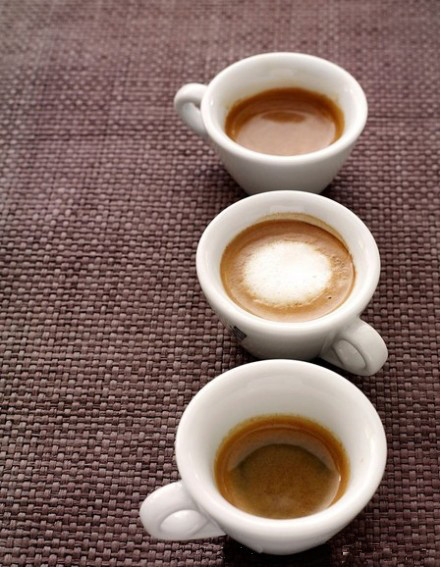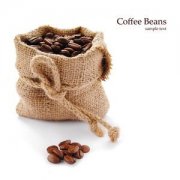Why coffee is one of America's most popular drinks
In the past, I have written a lot about the social and environmental impact of coffee. Coffee is one of the most popular drinks in the world and one of the most traded goods in the world. I've been writing a book about coffee (contact me if you're interested), but I've been hesitant: I don't know how many coffee consumers really want to know about what's going on behind coffee.
Many of us like to savor the taste and feeling of a cup of hot Scotch coffee, not to mention the satisfaction of the slightly affected rituals when tasting coffee, but about the beans behind a cup of coffee, how many people really want to know? There has been a long discussion about caffeine, but science still can't explain what effect it has on the human body. not to mention how the nearly 100 other biological ingredients in the latte presented to you affect the body when they combine with each other. Much of the debate revolves around the health effects of coffee on the human body, and related academic reports are often contradictory.

(related information: "Benefits of Coffee as Garden Compost")
There is also a complex and delicate relationship between coffee, culture and the environment. If we adopt the correct planting method, coffee can help protect the natural environment of more than half of the forest or even the whole forest, and the value of the natural environment is inestimable by the traditional way of growing coffee. Coffee farming can provide jobs for people in the countryside. similarly, coffee is a major export commodity for many developing countries.
But if the method is not correct, coffee farming can directly lead to adverse factors such as extinct rainforests, large amounts of pesticides, caffeine workers suffering from related occupational diseases, ruthless exploitation by coffee plantation owners, and degradation of the natural environment. Many certified coffee planting schemes announce the market value of their products to the world by overpressing and forcibly increasing output. I have written a lot about fair and free trade, nature conservation, organic cultivation, combined rainforest planting and other similar schemes in the coffee growing industry.
People who are crazy about coffee tend to stubbornly prefer a certain brand of coffee beans they like or a specified coffee bean originating in a particular country, or so fine that each ingredient is added or cut with a fixed proportion of mixed flavor. As the old saying goes, there are three things to pay attention to good coffee: first, we should pay attention to the planting place, second, we should pay attention to the people who grow coffee, and third, we should ensure that there are no chemical additives in coffee planting. nowadays, such an old proverb can no longer keep up with the trend of the times-if growers want to pay attention to the complete absence of chemical additions, to ensure purebred planting, fair trade, combined rainforest planting, and so on, the cost is too high.
Coffee also has a strong cultural and historical background, whether in its origin or in the world. Valuable coffee seeds have been smuggled to distant jungle countries for illegal large-scale gardening, and coffee houses have gradually become another center for people to gather about globalization and cooperative responsibility. a shelter for political debates such as independent possession. Activists once set up pickets at the first Starbucks in our college town, and once they yelled at me, "are you really here to spend so much money for a cup of coffee?" I told them I was just here for a cup of hot chocolate, but they still had an expression of mistrust, and the display glass on the front face of the coffee shop was smashed a week later.

(related information: "Crafty Ways to Reuse Coffee Bags")
Although I'm a little sensitive to caffeine, it doesn't stop me from enjoying an occasional cup of decaffeinated coffee (I know it feels like a blasphemous saint), and I looked at the chart with great interest. Drew Hendricks, a casual acquaintance of mine, who does some social media authoritative work for the company that produced this chart, asked me if I was interested in using the chart. This is how he described it:
Although coffee originated in North Africa, it plays a very important role in the United States.
Coffee was first introduced to the United States by the British, when it was regarded as a second-rate drink, especially when compared with tea, which was popular at that time. However, just after the Boston Tea pouring incident, the Boston Tea pouring incident, also known as Boston Tea, took place during the political demonstration on December 16, 1773. Because the colonists in North America were dissatisfied with Britain, local residents dumped tea in Boston, Massachusetts, against the British Parliament, which eventually led to the famous American War of Independence. It is not only one of the key points of the American Revolution, but also one of the important historical events of the founding of the United States. -- translator's note.) Coffee was very popular in the United States, which was still a colony at that time. After the incident in protest against the British tea tax, drinking tea is widely regarded as an act of treason, while drinking coffee has become a symbol of independence.
Coffee continued to play an important role in American culture during the "coffee break" during World War II. After seeing the magical effect of caffeine on employees, factory owners gave employees longer breaks and even offered them coffee.
As the infographic designed by Lumin Interactive and Condor Consulting shows, coffee remains one of the most popular drinks in the United States, with nearly 80 percent of Americans being coffee drinkers. With the continuous expansion of the number and scale of coffee shops across the country, the popularity of coffee will continue to grow.
(author Information: Brian Clark Howard is a writer and editor of National Geographic. He has worked as editor of The Daily Green and E/The Environmental Magazine Magazine and contributed to TheAtlantic.com, FastCompany.com, MailOnline.com, PopularMechanics.com, Yahoo!, MSN and many other publications. He recently co-published his new book Build Your Own Small Wind Power System with Kevin Shea.)
Important Notice :
前街咖啡 FrontStreet Coffee has moved to new addredd:
FrontStreet Coffee Address: 315,Donghua East Road,GuangZhou
Tel:020 38364473
- Prev

What are the common types of coffee in daily life?
What kinds of coffee are common in our daily life? The summary is divided into the following categories, for everyone to introduce! Instant coffee includes powdered, granular and cold-frozen types in recent years. Such as Nestl é (in fact, most of the earliest people who come into contact with coffee start from instant), brewing is simple and can be mixed with hot water. But lack of richness and variety of taste; it has been reported that speed
- Next

Espresso is a popular coffee drink all over the world.
Espresso is a type of coffee with a strong taste by brewing coffee with extremely hot but non-boiling hot water under high pressure and grinding it into a very fine coffee powder. It was invented and developed in Italy and began in the early 20th century, but until the mid-1940s, it was a drink made separately through vapor pressure. In the invention of spring lobe lever (spring pis)
Related
- Beginners will see the "Coffee pull flower" guide!
- What is the difference between ice blog purified milk and ordinary milk coffee?
- Why is the Philippines the largest producer of crops in Liberia?
- For coffee extraction, should the fine powder be retained?
- How does extracted espresso fill pressed powder? How much strength does it take to press the powder?
- How to make jasmine cold extract coffee? Is the jasmine + latte good?
- Will this little toy really make the coffee taste better? How does Lily Drip affect coffee extraction?
- Will the action of slapping the filter cup also affect coffee extraction?
- What's the difference between powder-to-water ratio and powder-to-liquid ratio?
- What is the Ethiopian local species? What does it have to do with Heirloom native species?

